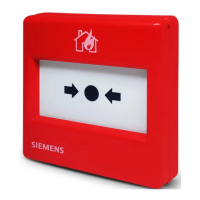12
fMRI User Guide
4.2.2 LCD Screen
An LCD screen placed near the foot end of the table or behind the bore may be used for visual stimulus
presentation. This form of visual presentation has excellent quality in terms of visual clarity and signal fidelity.
At the same time however, it is very challenging to install inside a magnet room compared to a projector screen,
since there are many noise sources within the device that can affect image quality. First, the whole screen
must be stripped of all ferromagnetic parts, and a Faraday cage must be built around it. The front of the LCD
screen must also be RF shielded to prevent noise leaking through the front. This is achieved by using electrically
conductive glass (min. attenuation desired > 60dB) to cover the front of the screen, and connecting it electrically
to the Faraday cage. The power supply may be separated from the screen, since it is most susceptible to failure
(iron core transformers) due to high magnetic fields.
Figure 4. An example of an fMRI peripheral equipment setup. GSR: galvanic skin resistance.
The cables carrying power and the video signals from the stimulus computer must connect to the screen by means
of two filter panels, one between the scanner and control rooms, and the other on the Faraday enclosure around
the screen. Despite all the measures, LCD monitors can still pose a challenge to contain RF noise completely.
Button
Box
LCD
Headphones
Transducer
Unit
Blue
Tooth
BIOPAC
Controller
ASL
Controller
Sound
Controller
Opt. to TTL
Converter
Opt. Trig. Out
From Scanner
DVI-FOC-DVI
fORP
BNCBNC
Waveguides
Eye Tracker
GSR
Siemens
Physio
Scanner Room Control Room
FOC FOC
FOC
BNC
DVI
AC Power
2x GSR Electrodes
RF Filter
Panel
Stimulus
PC
Recording
PC
Siemens
PC

